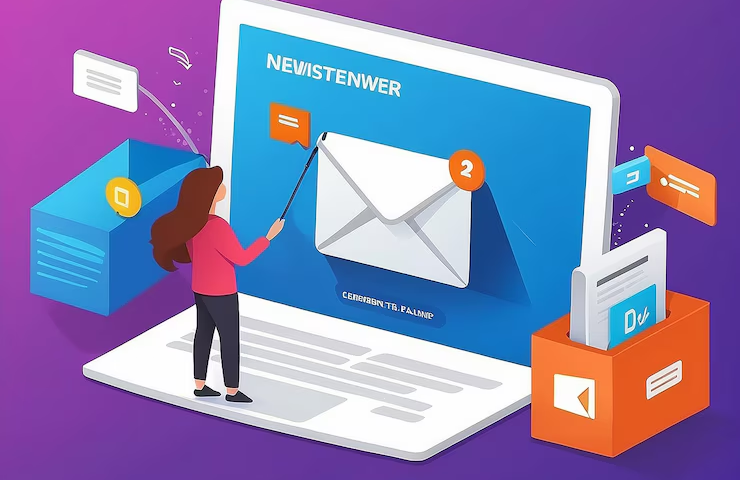Increasing website traffic and sales is a primary goal for many businesses, as it directly impacts their growth and profitability. Achieving this goal requires a multifaceted approach that includes optimizing content, leveraging various marketing strategies, and continuously analyzing and improving your efforts. If you’re wondering how to write an SEO optimized blog post to attract more visitors and convert them into customers, this guide will provide you with actionable strategies to increase your website traffic and sales.
1. Create High-Quality, SEO Optimized Content
How to Write an SEO Optimized Blog Post
Creating high-quality, SEO optimized blog posts is essential for driving organic traffic to your website. Start by conducting thorough keyword research to identify terms that your target audience is searching for. Tools like Google Keyword Planner, SEMrush, and Ahrefs can help you find relevant keywords with a good search volume and low competition.

When writing your blog post, ensure that your primary keyword is included in the title, meta description, headers, and throughout the content. However, avoid keyword stuffing; the content should read naturally and provide value to the reader. Break up your content with headings, bullet points, and images to improve readability. Use internal links to guide readers to other relevant pages on your site and external links to high-quality sources to enhance credibility.
Leverage Long-Tail Keywords
Long-tail keywords are specific phrases that are less competitive but highly relevant to your niche. These keywords often have lower search volumes but higher conversion rates because they target users who are further along in the buying process. Incorporate long-tail keywords naturally into your content to attract highly targeted traffic.
2. Utilize Social Media Marketing
Engage with Your Audience
Social media platforms are powerful tools for driving traffic to your website. Engage with your audience by regularly posting valuable content, responding to comments, and participating in discussions. Each platform has its unique features and audience, so tailor your content to fit each one. For example, use visually appealing images and videos on Instagram, share industry news and professional insights on LinkedIn, and engage in real-time conversations on Twitter.

Run Paid Social Media Campaigns
Paid social media campaigns can significantly boost your website traffic and sales. Platforms like Facebook, Instagram, and LinkedIn offer advanced targeting options that allow you to reach specific demographics, interests, and behaviors. Create compelling ads with strong calls-to-action and link them to landing pages optimized for conversions.
3. Implement Email Marketing
Build and Segment Your Email List
Building a robust email list is crucial for driving traffic and sales. Offer valuable incentives such as eBooks, webinars, or discounts in exchange for email sign-ups. Once you have a list, segment it based on demographics, behavior, and preferences to send personalized and relevant content to each group.

Craft Compelling Email Campaigns
Create email campaigns that are engaging, informative, and aligned with your audience’s interests. Use attention-grabbing subject lines, high-quality visuals, and clear calls-to-action. Regularly send newsletters, promotional offers, and updates to keep your subscribers engaged and drive traffic to your website.
4. Optimize Your Website for Conversions
Conduct an SEO Site Audit Online
An SEO site audit online is essential for identifying and fixing issues that may be hindering your website’s performance. Use tools like Screaming Frog, SEMrush, and Ahrefs to conduct a comprehensive audit. Look for issues such as broken links, duplicate content, slow page speeds, and poor mobile usability. Fixing these issues can improve your site’s SEO, enhance user experience, and increase conversions.
Enhance User Experience (UX)
A positive user experience is critical for converting visitors into customers. Ensure that your website is easy to navigate, visually appealing, and responsive on all devices. Use clear and concise copy, high-quality images, and strong calls-to-action to guide users through the buying process. A/B testing different elements of your site, such as headlines, buttons, and layouts, can help you identify what works best for your audience.
Implement Clear Calls-to-Action (CTAs)
CTAs guide users towards taking a specific action, such as signing up for a newsletter, downloading a resource, or making a purchase. Use clear, concise, and compelling language for your CTAs and place them strategically throughout your site. Experiment with different colors, sizes, and placements to see what drives the highest conversion rates.
5. Leverage Influencer Marketing
Identify Relevant Influencers
Influencer marketing can be highly effective in driving traffic and sales. Identify influencers in your niche who have a significant following and align with your brand values. Look for influencers with high engagement rates and a genuine connection with their audience.
Collaborate on Content
Collaborate with influencers to create content that promotes your products or services. This could include sponsored posts, product reviews, unboxings, or social media takeovers. Influencers can help you reach a larger audience, build trust, and drive traffic to your website.
6. Invest in Paid Advertising
Pay-Per-Click (PPC) Advertising
PPC advertising allows you to display ads in search engine results and on other websites. Platforms like Google Ads and Bing Ads enable you to bid on keywords relevant to your business and only pay when someone clicks on your ad. Create targeted ad campaigns with compelling ad copy and landing pages optimized for conversions to maximize your return on investment.
Retargeting Campaigns
Retargeting campaigns target users who have previously visited your website but did not convert. By displaying personalized ads to these users as they browse other websites, you can remind them of your products or services and encourage them to return and complete their purchase. Retargeting can significantly increase conversion rates and ROI.
7. Create and Promote High-Quality Content
Develop a Content Marketing Strategy
Content marketing is a powerful way to attract and engage your target audience. Develop a content marketing strategy that includes blog posts, videos, infographics, podcasts, and other formats that resonate with your audience. Focus on creating valuable, informative, and entertaining content that addresses your audience’s needs and pain points.
Promote Your Content
Creating great content is only half the battle; you also need to promote it effectively. Share your content on social media, send it to your email subscribers, and reach out to influencers and bloggers who might be interested in sharing it with their audience. Guest posting on other websites and participating in online forums can also help you reach a wider audience.
8. Monitor and Analyze Performance
Use Analytics Tools
Monitoring and analyzing your website’s performance is crucial for understanding what works and what doesn’t. Use tools like Google Analytics, Google Search Console, and SEMrush to track key metrics such as traffic, bounce rate, average session duration, and conversion rates. Analyzing this data can help you identify areas for improvement and make data-driven decisions to optimize your marketing efforts.
Continuously Improve Your Strategy
SEO and digital marketing are constantly evolving fields. Stay up-to-date with the latest trends, algorithm updates, and best practices to ensure your strategies remain effective. Regularly review and adjust your marketing tactics based on performance data and industry changes.
Boost Your Growth with Expert Branding and Website Design for Startups by Directing Design
In your journey to increasing website traffic and sales, partnering with a proficient marketing agency can make all the difference. Directing Design, a leading marketing agency, specializes in Branding and Website Design for Startups, offering tailored solutions that set you apart in a crowded market. Their expertise in crafting compelling brand identities and creating user-friendly, visually stunning websites ensures that your online presence not only attracts traffic but also converts visitors into loyal customers. By leveraging Directing Design’s innovative strategies and personalized approach, you can elevate your brand and drive substantial growth for your startup.
Conclusion
Increasing website traffic and sales requires a comprehensive and strategic approach. By creating high-quality, SEO optimized content, leveraging social media, implementing effective email marketing, optimizing your website for conversions, and investing in paid advertising, you can attract more visitors and convert them into loyal customers. Conducting an SEO site audit online and continuously monitoring and analyzing your performance will help you identify areas for improvement and stay ahead of the competition. With dedication and persistence, you can achieve significant growth in your website traffic and sales.



